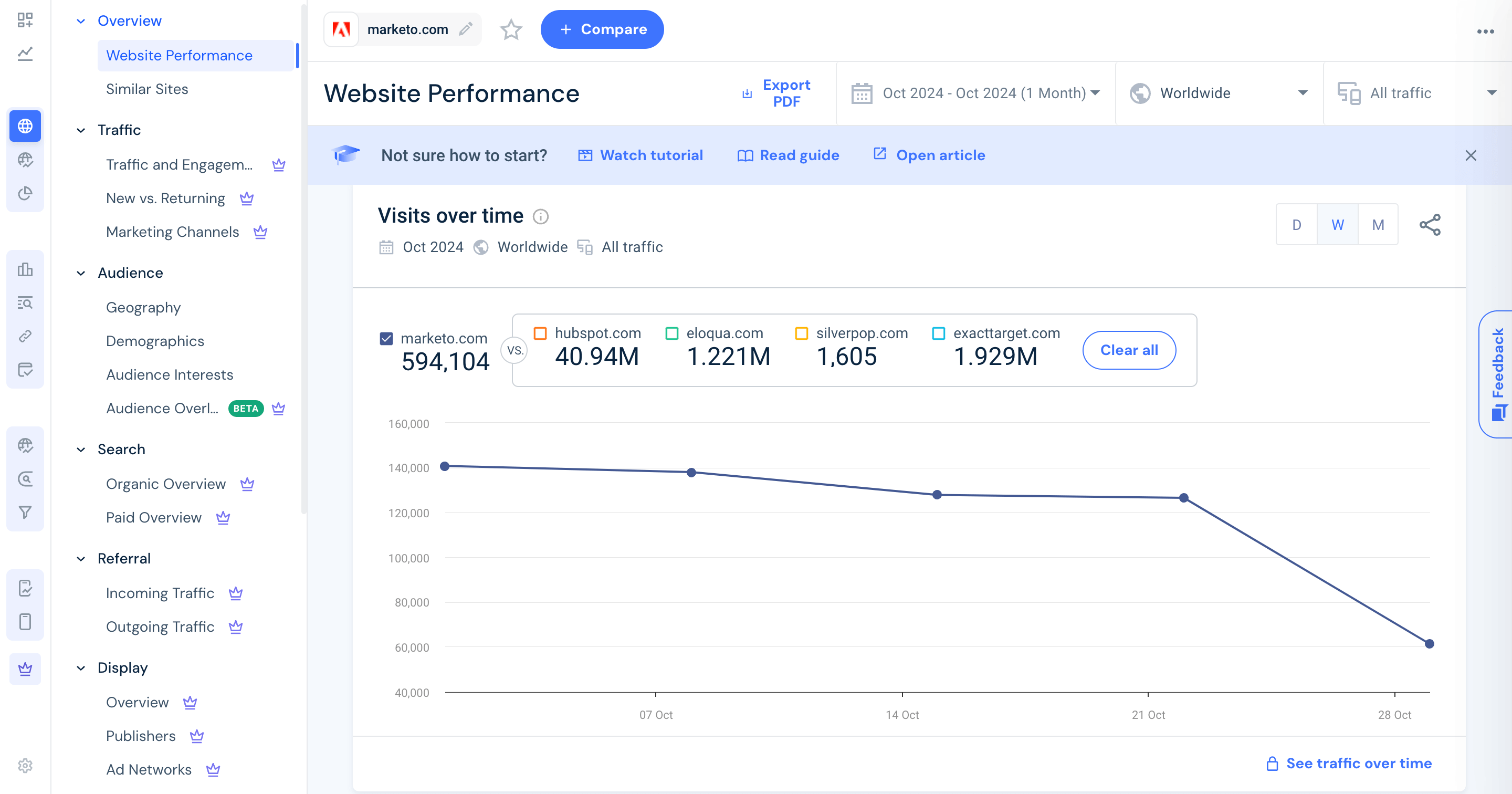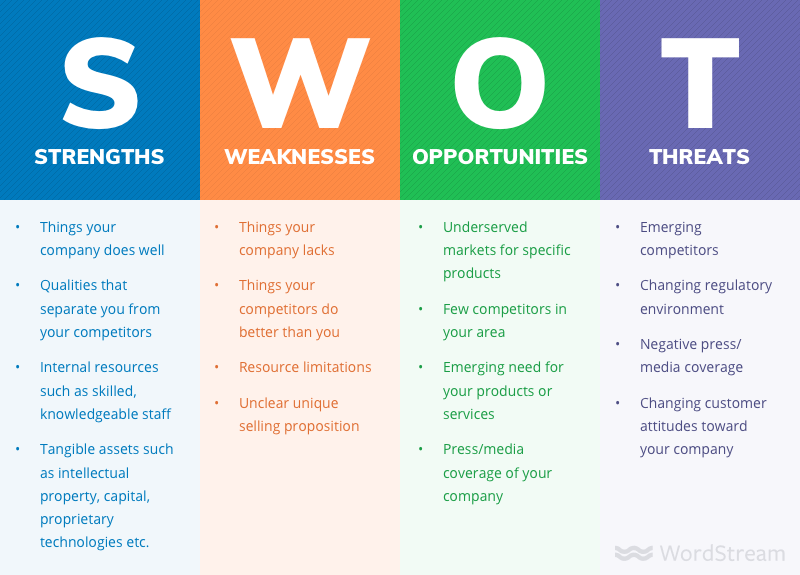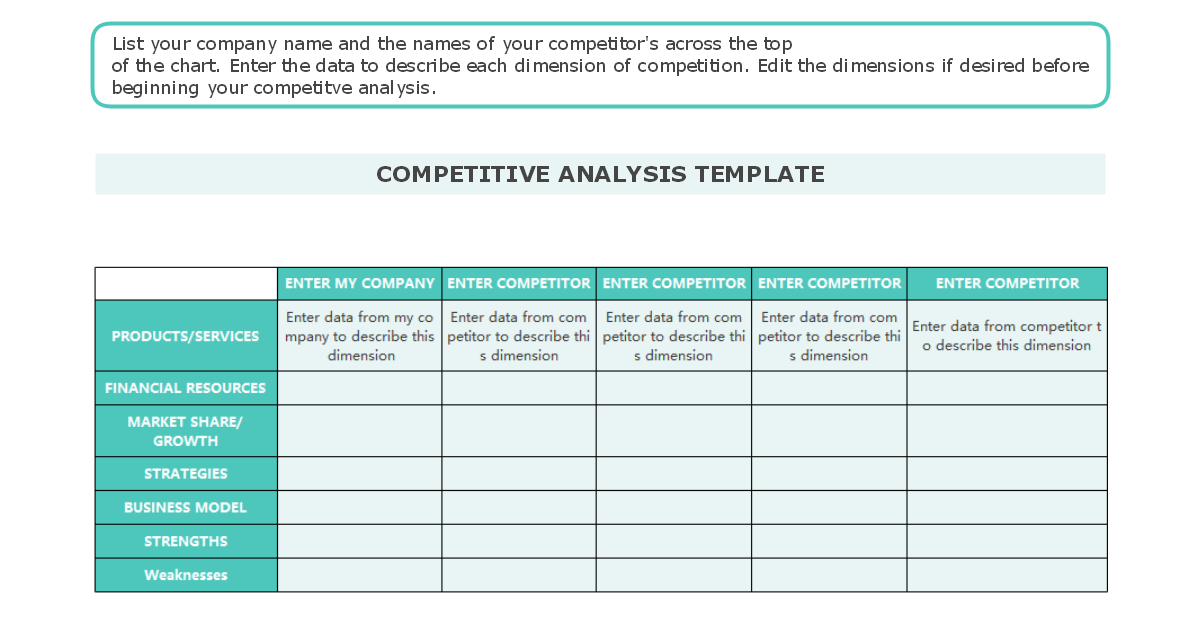Competitive analysis. It’s the backbone of effective marketing. But too many people skip it or do a half-baked job, then wonder why their strategies aren’t working. The fact is, if you want to succeed in marketing, you have to know what your competitors are doing—inside and out.
We’re talking about understanding your competitors’ strengths, finding their weaknesses, and most importantly, identifying the gaps you can exploit.
Whether you’re looking at their SEO, social media, content marketing, or PPC campaigns, every insight you gather can give you an edge.
In this guide, I’ll show you how to conduct a thorough competitive analysis to gain that edge and make your marketing work smarter.
Step 1: Identify Your Competitors
First things first, let’s identify who your competitors are. This is critical because you can’t analyze what you haven’t defined. Identifying your competitors isn’t just about pointing at the big players everyone already knows—there are direct and indirect competitors, and both matter.
- Direct Competitors: These are companies that sell the same products or services that you do, in the same market. They’re your head-to-head rivals.
- Indirect Competitors: These are companies that sell similar products or services but solve the same problem differently or serve a different segment. Don’t overlook these—they can be powerful competitors, too.
Here’s how to find them:
- Google Search: Start with the basics. Google your main keywords and see who shows up on page one. Pay attention to the organic results, as well as the ads.
- Industry Reports: If your industry is well-documented, look at reports from consulting firms or market research companies. They often highlight key players in the space.
- Social Media: Go on LinkedIn, Facebook, Instagram, or TikTok. Who’s active in your niche? Check your competitors’ followers and the pages they interact with. These are potential indirect competitors.
Step 2: Gather Competitor Data
You’ve identified your competitors. Now it’s time to gather data. To understand what makes your competitors tick, you need to collect as much information as possible—website analytics, social media presence, SEO rankings, PPC ads, and content strategy.
Here’s what to look at:
- Website Performance: How does their website look and feel? What’s their loading speed, navigation, and user experience like?
- SEO Metrics: Which keywords are they ranking for, and how are they structuring their content? Use SEO tools to uncover the keywords that drive their traffic.
- Content Marketing: Are they blogging? Are they producing videos? What’s the quality and frequency of their content like? Look at their engagement metrics too—comments, likes, shares.
- Social Media Presence: Which platforms are they active on, and how engaged are their followers? Are they running paid campaigns?
- PPC Campaigns: Look at the ads they’re running on platforms like Google Ads and Facebook Ads. What messages are they focusing on?
Step 3: Analyze Competitors’ Website and SEO Strategy
Now we dig deeper. You’ve gathered the raw data—time to analyze it. Let’s focus on your competitors’ websites and SEO strategies.
- On-Page SEO Analysis: Examine their meta titles, descriptions, and target keywords. Are they doing something different in terms of content length or keyword placement? Look for how often they publish content and the types of keywords they’re targeting.
- Technical SEO Analysis: Is their website mobile-friendly? What’s their loading speed? Are there any broken links? Use tools like Ahrefs to perform a full technical audit.
- Backlink Profile: Backlinks are critical to SEO. Use backlink analysis tools to determine where your competitors are getting their backlinks. Look for high-authority domains that link to them, and note opportunities for your own link-building strategy.
- Keyword Opportunities: Use keyword gap tools to identify where your competitors are ranking, but you aren’t. These gaps present opportunities for you to create content that can outrank them.
One of my favourite tools for analyzing competitors is SimilarWeb. You can plug in a competitor’s URL and discover how they drive traffic, who their audience is, and more.

Step 4: Evaluate Content Marketing Strategies
Let’s dive into their content. Content is one of the most important elements of marketing today, and a competitor’s content strategy can tell you a lot about how they’re reaching your shared audience.
- Content Types and Themes: Identify the types of content your competitors are putting out—blogs, videos, podcasts, infographics. What are the recurring themes? Are they emphasizing educational content, product-based content, or customer stories?
- Engagement Metrics: Content without engagement doesn’t do much. Look at metrics like social shares, comments, likes, and backlinks. Are readers engaging with their content? Are there any gaps in the type of content they publish that you could fill?
- Content Gaps: One of the best ways to get ahead is by finding gaps in your competitors’ content. Use tools like Ahrefs Content Gap to identify keywords and topics your competitors are covering, and where they’re falling short. Then, create content that fills those gaps—content that is more comprehensive, more engaging, and more aligned with what your audience is looking for.
Step 5: Review Social Media Presence
Social media is where most customers are spending their time, and understanding your competitors’ presence here can be a major win.
- Platforms: First, identify which platforms your competitors are on. Are they focusing on Facebook, LinkedIn, Instagram, Twitter, or TikTok? The platform they choose can tell you a lot about who they’re targeting.
- Engagement and Activity: How frequently are they posting, and what’s the level of engagement? Analyze their most engaging posts and try to understand what type of content resonates with their audience. Look for patterns—are they sharing more videos, doing more giveaways, or maybe posting behind-the-scenes content?
- Content Types and Messaging: What type of content are they posting—videos, images, plain text, carousels? Pay close attention to the messages they use. Are they informative, entertaining, or promotional? Understanding this helps you position your social media content differently to stand out.
Step 6: Analyze Competitor Advertising (PPC)
Let’s get into the details of your competitors’ advertising campaigns. Paid ads, whether on Google, Facebook, or elsewhere, are often a treasure trove of insights.
- Google Ads: Use a tool like SEMrush or SpyFu to look at the keywords they’re targeting. Are they spending more on branded keywords or generic ones? What’s their ad copy like, and what type of offers are they using to entice clicks?
- Facebook Ads: Facebook’s Ad Library is a great resource for checking out your competitors’ ads. Pay attention to how often they run ads, what creative formats they’re using, and the tone of the copy. What’s the CTA (call-to-action) they’re using?
- Budget Estimates: Use tools to estimate how much they might be spending. You don’t need an exact number—just a sense of how aggressive they are with their paid campaigns.
The point here is to understand what’s working for them and identify opportunities. If they’re focusing heavily on a particular keyword or offer, that might be a sign that it’s valuable. You could either compete or differentiate based on what you find.
Step 7: SWOT Analysis for Competitors
After gathering all of this data, it’s time to organize it into a SWOT analysis for each of your competitors. This is where you truly distill the information down into useful insights.

- Strengths: What is your competitor doing well? Maybe they have a strong social media following, dominate SEO rankings, or create viral content. Identify these strengths, because it shows you where they might be difficult to compete with directly.
- Weaknesses: Where are they lacking? Do they have poor engagement rates? Are they missing mobile optimization? Weaknesses are areas that you can exploit in your own strategy.
- Opportunities: What can you capitalize on? Are there gaps in their content, keywords they’re not ranking for, or social platforms they’re ignoring? These are opportunities you can take advantage of.
- Threats: What are the threats your competitors pose to your business? Understanding this can help you strategize effectively to counter their strengths.
Step 8: Compare Pricing and Offers
Pricing is one of the biggest factors in competitive positioning. Analyzing how your competitors price their products or services gives you insight into how you should structure your own.
- Pricing Strategies: Look at whether they’re using a cost-leadership strategy or positioning themselves as premium. This helps you decide how to differentiate—are you offering a more affordable, value-driven solution, or are you positioning your brand as a premium product?
- Promotions and Offers: Promotions play a key role in drawing customers. Look at what kinds of promotions your competitors are using—discounts, bundles, loyalty rewards. Use tools to monitor their offers over time and spot trends. For example, do they always offer a sale at the end of the month? This insight can help you schedule your own promotions accordingly.
Step 9: Summarize Findings and Develop Actionable Insights
Now that you’ve gathered all of this information, it’s time to make sense of it. Competitive analysis is only useful if you translate it into action. Here’s how you can do that:
- Identify Key Areas of Improvement: Start by identifying which areas need improvement. Maybe you need to improve your SEO to match or beat your competitors. Or maybe you need a stronger content strategy to fill gaps left by competitors.
- Set Clear Goals: Based on your findings, set SMART (Specific, Measurable, Achievable, Relevant, Time-Bound) goals. For example, “Increase blog content targeting the keyword gap by 20% over the next three months.”
- Prioritize Actions: You likely won’t have the resources to tackle every gap or weakness right away. Prioritize actions that will have the greatest impact on your business.
The idea is to turn your competitive analysis into a living strategy document that helps you take actionable steps to grow and outperform your competitors. Here’s an example that you can use for free:

Tools for Competitive Analysis
To effectively conduct competitive analysis, having the right tools is a must. Here’s a quick breakdown of tools that will help you along each step of the way:
- Identifying Competitors: Google Search, SimilarWeb, BuzzSumo, SEMrush.
- Gathering Data: Ahrefs, SEMrush, SpyFu.
- Website and SEO Analysis: Ahrefs, Moz, Screaming Frog.
- Content Analysis: BuzzSumo, Ahrefs Content Gap.
- Social Media Analysis: Hootsuite, BuzzSumo, Social Blade.
- PPC Analysis: SEMrush, SpyFu, Facebook Ad Library.
Free Tools vs. Paid Tools: You can definitely get started with free tools—Google Search, SimilarWeb, and Facebook Ad Library are all free to use. But if you want to go deeper and get more comprehensive data, tools like Ahrefs and SEMrush are worth the investment.
Wrapping Up How to Conduct Competitive Analysis
Conducting a competitive analysis is more than just gathering data—it’s about understanding how you stack up against your competitors and making strategic decisions that will give you an edge. It’s about taking a data-driven approach to understanding the market and using those insights to build better strategies, content, and campaigns.
Competitive analysis is not a one-and-done exercise. It’s something you should revisit regularly—your competitors aren’t standing still, and neither should you. Keep analyzing, keep improving, and you’ll find yourself consistently ahead of the pack.
Schedule a free consultation to learn more about my marketing services that will help your business drive more revenue.














